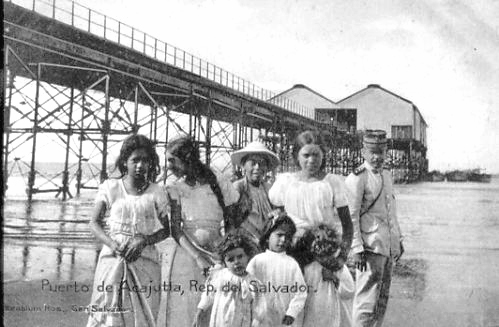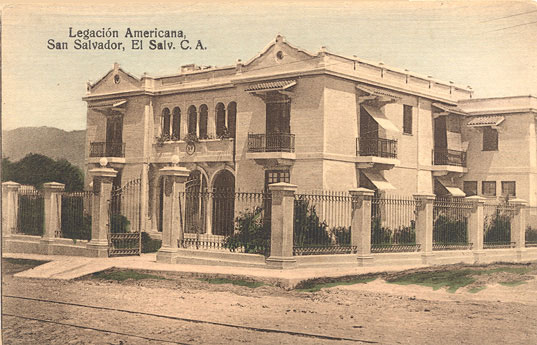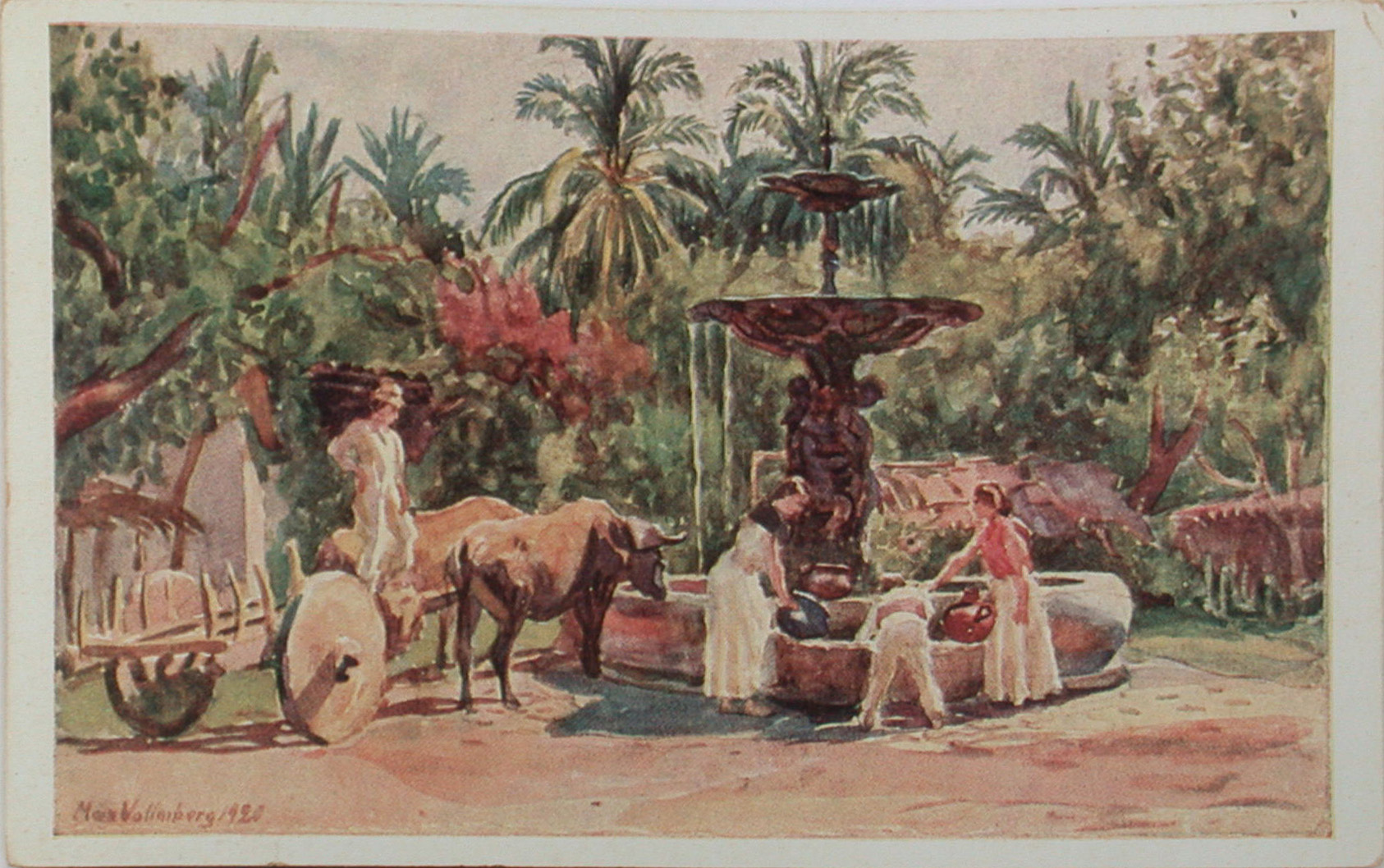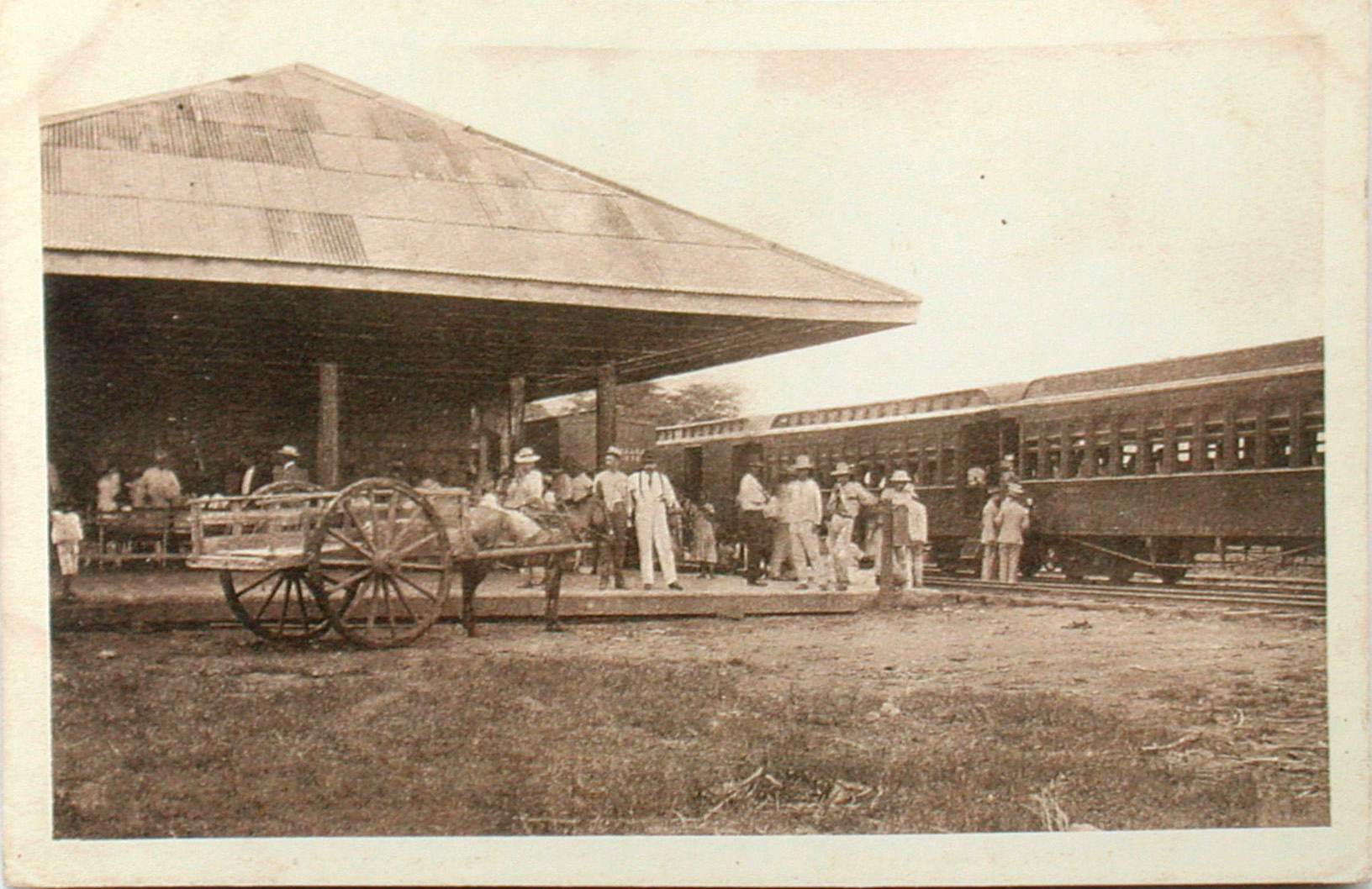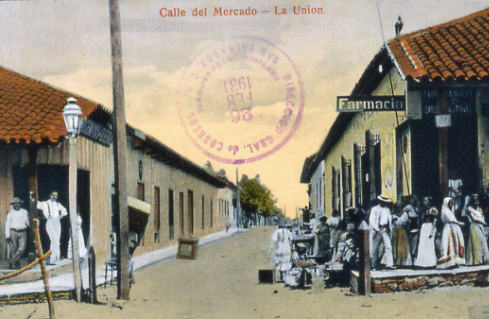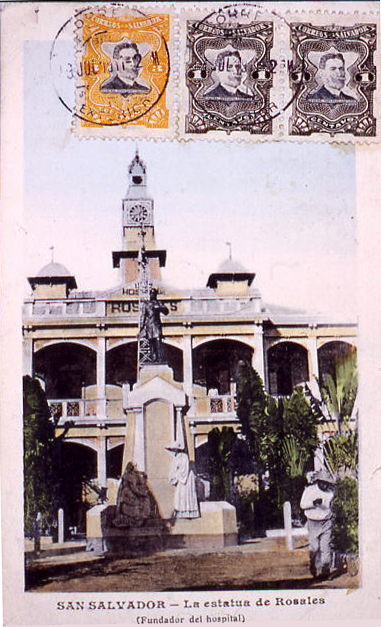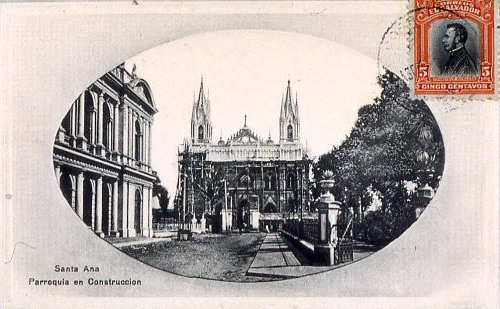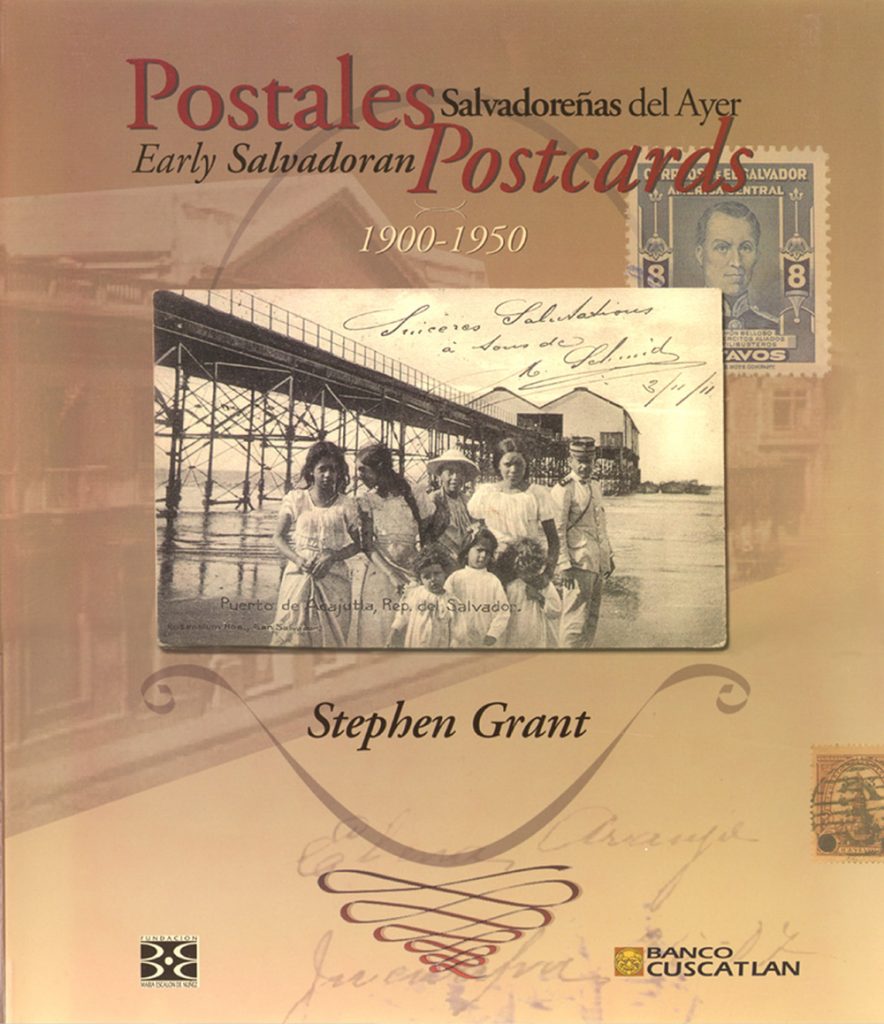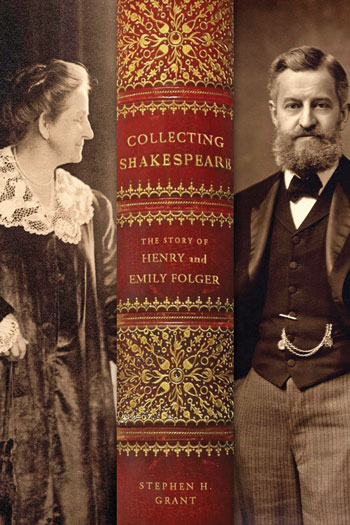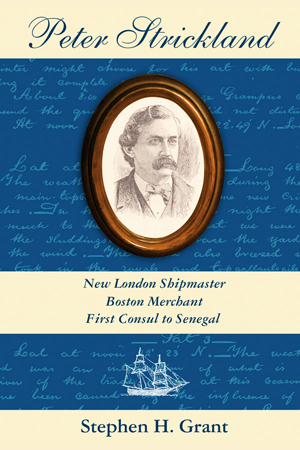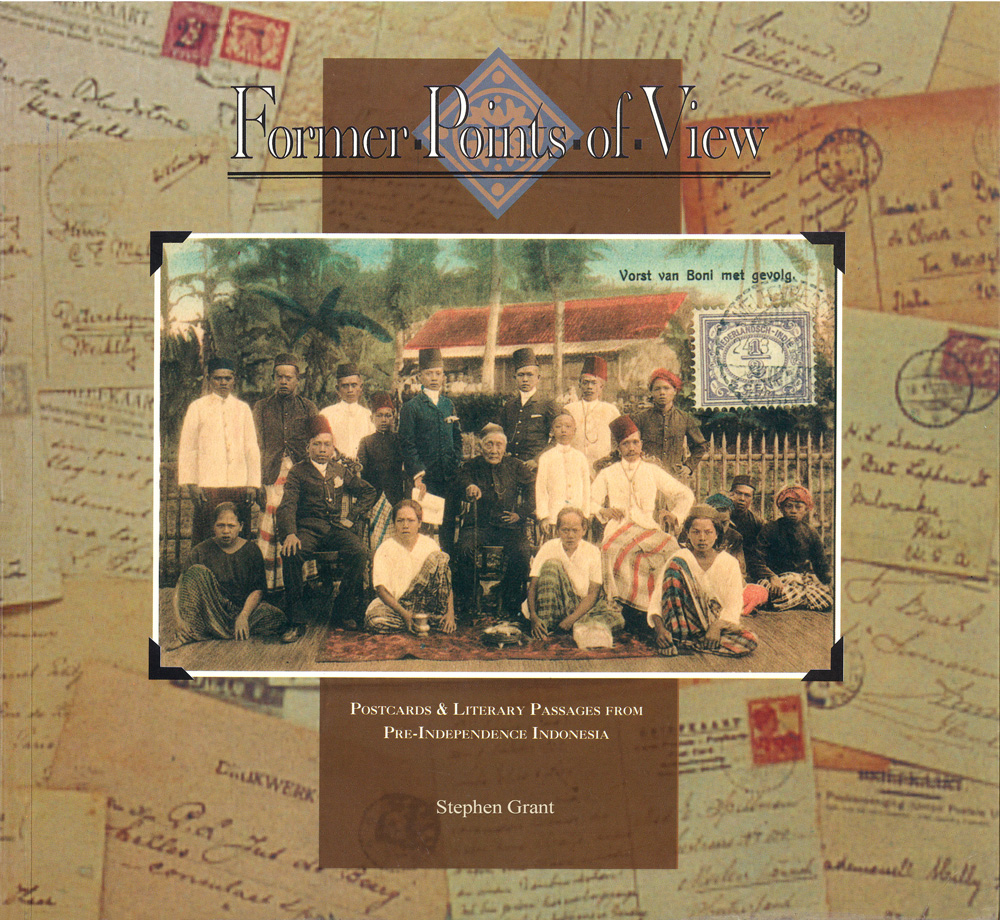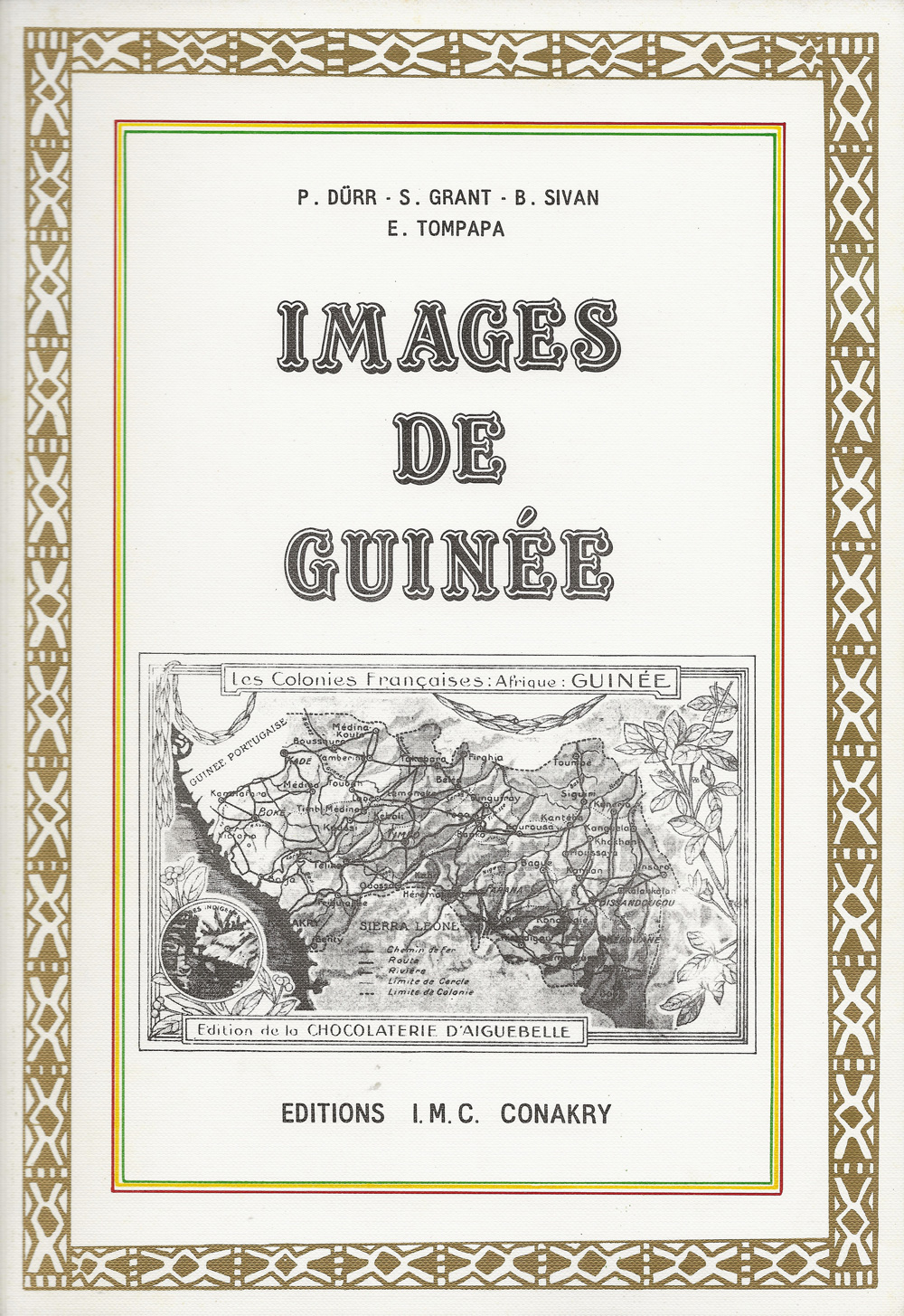Postales Salvadoreñas del Ayer
Early Salvadoran Postcards
“We express to you our gratitude for the contribution you have made to El Salvador by providing all Salvadorans with this document which will allow historical scenes from 20th century El Salvadoran to be graphically engraved in the minds and hearts of present-day Salvadorans as well as future generations.”
Carlos Quintanilla Schmidt, Vice-President of the Republic of El Salvador
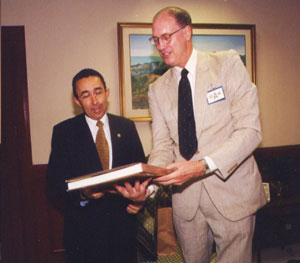 247 Salvadoran picture postcards from the period 1900–1950 are reproduced in color, with extensive commentary on 100. Typical scenes include early public buildings; streets and squares in the capital; ports and markets; hotels and lakes; groups of Indians. The book contains biographies of men responsible for the photography, production, and distribution of postcards. The author explains how one builds a collection and the methodology he used to investigate Salvadoran history to make the old postcards come alive today. Early Salvadoran Postcards is one of the first extensive studies published on the old postcards of a Latin American country. The book was conceptualized, researched, developed, designed, and printed in El Salvador. The financial sponsors were Banco Cuscatlán and the María Escalón de Núñez Foundation.
247 Salvadoran picture postcards from the period 1900–1950 are reproduced in color, with extensive commentary on 100. Typical scenes include early public buildings; streets and squares in the capital; ports and markets; hotels and lakes; groups of Indians. The book contains biographies of men responsible for the photography, production, and distribution of postcards. The author explains how one builds a collection and the methodology he used to investigate Salvadoran history to make the old postcards come alive today. Early Salvadoran Postcards is one of the first extensive studies published on the old postcards of a Latin American country. The book was conceptualized, researched, developed, designed, and printed in El Salvador. The financial sponsors were Banco Cuscatlán and the María Escalón de Núñez Foundation.
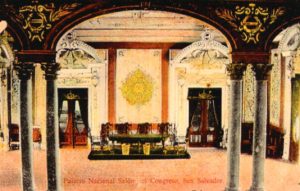 The section “Collecting Postcards” is designed to answer the fundamental questions people may have about this hobby or pastime. What is a postcard? Where do you find postcards? How much do postcards cost? What do you do with your postcards? Features of old postcards: size & color, type, era, dating, publication, postage stamps, postal history, and censorship.
The section “Collecting Postcards” is designed to answer the fundamental questions people may have about this hobby or pastime. What is a postcard? Where do you find postcards? How much do postcards cost? What do you do with your postcards? Features of old postcards: size & color, type, era, dating, publication, postage stamps, postal history, and censorship.
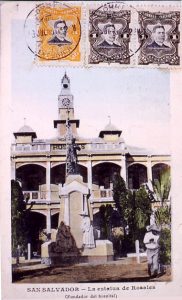 The section “Salvadoran Postcards” addresses the following topics: the first Salvadoran postcards, postal and shipping information, related early photography in El Salvador, the methodology used to learn about Salvadoran postcards, followed by a statistical presentation of 100 postcards. Each entry includes where available printed information on the picture side, printed information on the address side, written message on either side, information from postmark, destination, information on postage stamp including Scott catalog number, color type, comments.
The section “Salvadoran Postcards” addresses the following topics: the first Salvadoran postcards, postal and shipping information, related early photography in El Salvador, the methodology used to learn about Salvadoran postcards, followed by a statistical presentation of 100 postcards. Each entry includes where available printed information on the picture side, printed information on the address side, written message on either side, information from postmark, destination, information on postage stamp including Scott catalog number, color type, comments.
Production and distribution of the 100 postcards can be traced back to nine extraordinary individuals, each of whom is honored by a photo, his signature, and a brief biography: Herbert De Sola, Bruno Hecht, Victor J. Hellebuyck, E. E. Huber, Salvadoran Mugdan, Frederico Noltenius, Julio Rank, José Angel Recinos, Anibal J. Salazar. These Postcard Pioneers can be characterized in the following manner:
- People who became major commercial and real estate developers within El Salvador.
- People who became major landowners, and agricultural producers, especially of coffee.
- They owned and ran stores catering to an internationally minded clientele seeking imported products.
- People with strong commercial ties to foreign countries (particularly Holland, Germany, Spain, Switzerland, United States) through import & export.
- People who had consular responsibilities, further strengthening linkages abroad.
- Shipping line agents.
- Foreign-born immigrants who married locally.
- Postcards constituted a small sideline in their operations.
Grant, Stephen, Postales Salvadoreñas del Ayer/Early Salvadoran Postcards. San Salvador, El Salvador: Fundación María Escalón de Núñez, 1999, 328 pp. Bilingual edition. ISBN 99923-20-01-1. Preface, foreword, prologue by Pedro Antonio Escalante Arce, Secretary Salvadoran Academy of History, introduction, 247 images, 2 maps, bibliography, name index, conclusions, annexes.
A TV interview in Spanish with Stephen Grant when his book, Early Salvadorian Postcards, came out.
“As an American librarian specialist in Latin America who has written about using postcards as visual historical resources, I highly recommend this valuable work to librarians, scholars, and students interested in Central America. Combining oral history with exhaustive bibliographic research, Dr. Grant has recovered unwritten and previously unattainable information on people, places, buildings, and events. Dr. Grant’s informative and handsome book will establish a new standard for the growing interest in using picture postcards to document and interpret social history.”
– Martha E. McPhail, San Diego State University
“Stephen Grant introduced me not just to a mass of worn postcards, but to a veritable treasure, preserved meticulously with the care and keep eye of an intelligent, sagacious, and subtle collector. He was a person conscious of what he possessed, knowledgeable about the details and intricacies of what he held, and who recognized the cultural, historical, and anecdotal value of his collection. His aim was to share with Salvadorans the enjoyment of his collection, and to produce a publication which would offer to the public the little known facet of postcards as testimonies of bygone eras.”
– Pedro Antonio Escalante Arce, Secretary, Salvadoran Academy of History
“We express to you our gratitude for the contribution you have made to El Salvador by providing all Salvadorans with this document which will allow historical scenes from 20th century El Salvadoran to be graphically engraved in the minds and hearts of present-day Salvadorans as well as future generations.”
– Carlos Quintanilla Schmidt, Vice-President of the Republic of El Salvador
“The commentaries made by others who have consulted your book attest to their admiration for the care and effort you devoted to our country in developing this valued collection of postcards and in placing them in their historical context that we can now appreciate. We also note the outstanding originality and professionalism that have marked your contribution to our history. You have demonstrated enormous sensitivity in your research and have shown us how through picture postcards we can become closer to moments of our past.”
– Eugenia López, Director of National Archives
“It is a real pleasure to greet you and convey to you how moved I am by your book on early Salvadoran postcards. I recognize your marvelous initiative and tenacity which have resulted in such an important document for our culture. Your detailed research has allowed us to know a little more about our own past and the customs of yesteryear, to enjoy nice views and unequaled images that show the world of our grandparents when peace and simplicity were part of the Salvadoran patrimony.”
– Alvaro Dagoberto Gonzalez Soriano
“Stephen Grant, with this work, has given us Salvadorans a part of our history which we did not know. In his book and mine, Stephen Grant and I realized that we were talking about the same subject, at more or less the same period; but with a different yet completely complementary focus. His major work of research outside or contacting historians has been interviews with descendants of friends or personalities at the beginning of the 20th century. This work alone is invaluable for our history.”
– Gustavo Herodier, author of “San Salvador, El Esplendor de una Ciudad: 1880–1930
THE POWER OF A POSTCARD
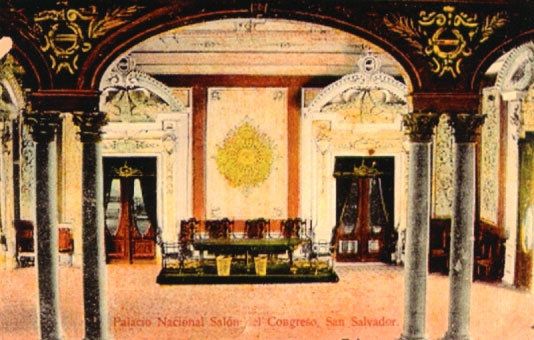
Listen to the audio
The hand-tinted postcard depicts the Blue Room of the National Palace in San Salvador, El Salvador. Under the title on the card is the handwritten date, July 12, 1912, that the postcard was sent from San Salvador to Havana, Cuba. This room is where the Salvadoran National Assembly deliberated and presidents were sworn in.
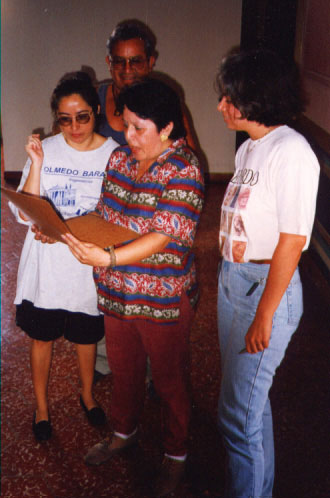
Listen to the audio
When I heard that this historic room was being restored, I made a high-resolution digital enlargement of this card I had acquired from a French postcard dealer to show to the crew. They were preparing plaster and mixing colors but they had no clear idea of probable colors a century or so before. You can see the astonishment on the face of a crew member when she looked at this very picture. The power of a postcard was in the utility to help inspire restoration efforts in an historical edifice.
§

Presenting a copy of my book to the Salvadoran vice-president, Carlos Quintanilla Schmidt.
§
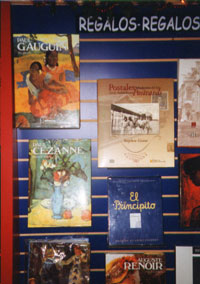
Illustrious company for my book in a San Salvador book shop: next to Cezanne, Gauguin, and “the Little Prince.”
Diploma of “Correspondent” of the El Salvador Athenaeum for cultural contribution to national patrimony through Grant’s book on old Salvadoran Postcards, 2000
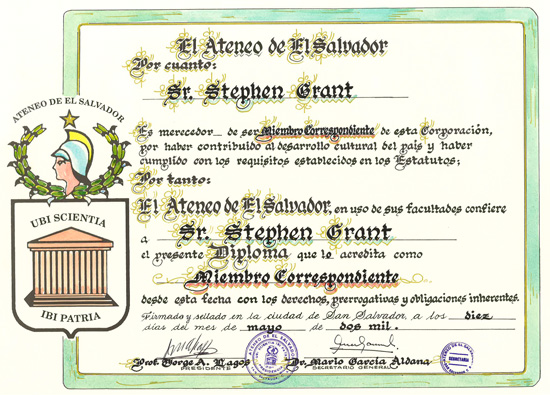
Interamerican Association of Librarians and Manuel Gallardo Library recognized Grant’s book on Old Salvadoran Postcards, 1999
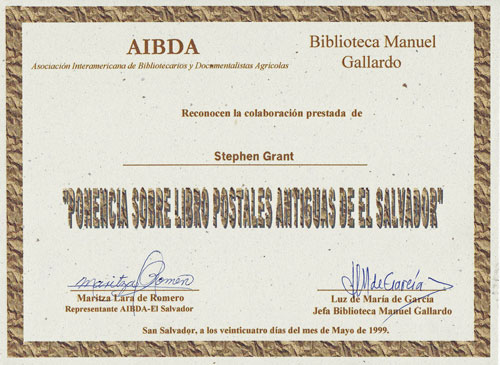
IMAGE GALLERY
CONNECT

